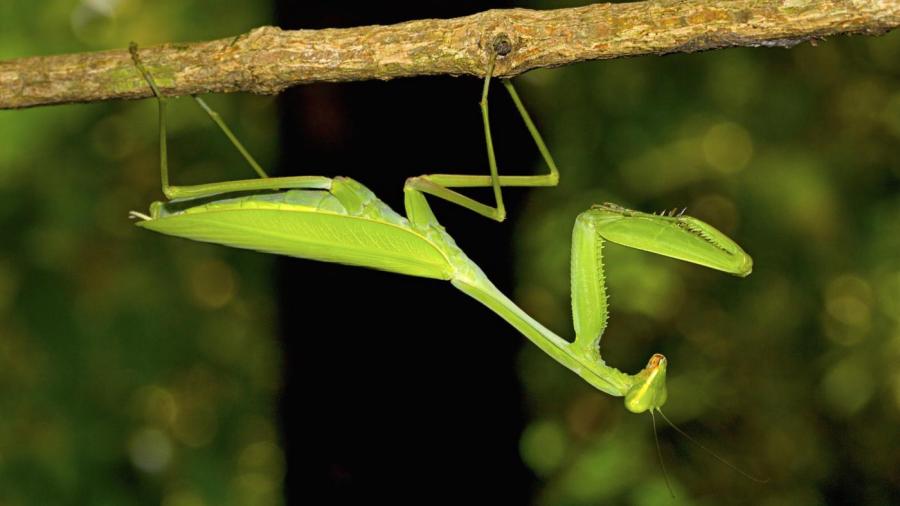What Are Some Facts About the Praying Mantis?

The praying mantis is an insect found all over the world. The most eye-catching feature of the praying mantis are its front legs that make the insect look like it is praying. The insect uses its grasping front legs to capture and hold its prey. The praying mantis is harmless to humans but very beneficial to farmers, as it eats crop-destroying insects. The praying mantis lays its eggs in masses insulated with a foamy material in the winter.
The scientific name for the praying mantis is “mantis religiosia.” There are over 1,800 types of praying mantis all over the world, each adapted to its environment. Green is the most common color for a praying mantis. However, it can come in a range of brownish tones and colors in order to camouflage itself in its environment.
The lifespan of a praying mantis is less than one year. Praying mantises are carnivorous insects that specifically eat other insects such as spiders, beetles, aphids, roaches and flies. However, the praying mantis has a large number of predators including birds, bats, frogs, fish and other aqueous insects that eat larvae and pupae. Common habitats for praying mantises are gardens, fields, and temperate or tropical rain forests.





